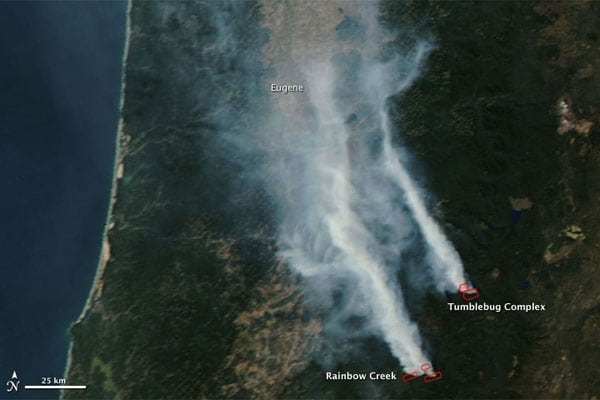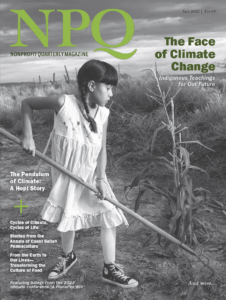
August 21, 2018; OPB.org
Safe shelter for people without homes is always a challenge, but as Oregonians are discovering, natural disasters pose particular challenges. The massive wildfires raging from Alaska to New Mexico (nearly two million acres have burned in the United States this year from 109 fires in 12 states) are contaminating the region’s atmosphere with smoke and ash, posing a significant health hazard.
“Oregon’s state health agency has advised that the most effective way to limit smoke exposure is to stay inside,” reports OBP. “[But] that’s often not an option for houseless people.”
For example, it reports that the city code in Medford only allows emergency or temporary shelters to operate for 90 days each calendar year. Rogue Retreat, one of the primary such facilities in the city, hit that limit over the winter. To try to cope, the retreat has distributed about 200 masks to homeless people so far.
The increased vulnerability of homeless populations is not unique to wildfires. The National Coalition for the Homeless notes that these individuals often do not have the resources to evacuate and thus remove themselves from the path of a severe weather-related event, or even to collect needed supplies. In addition, notes the US Department of Housing and Urban Development, law enforcement personnel, frequently called upon to communicate evacuation and other instructions during disasters, often are not trusted by a population fearful of arrest. (Instead, it is advised to “send red, not blue”—fire department personnel, rather than police officers.)
Sign up for our free newsletters
Subscribe to NPQ's newsletters to have our top stories delivered directly to your inbox.
By signing up, you agree to our privacy policy and terms of use, and to receive messages from NPQ and our partners.
And then there is the broader context of trauma in which natural disasters occur. Homeless individuals are highly likely to have histories of trauma, exacerbating the impact of natural disasters. Consider this: The National Center on Family Homelessness reports that 92 percent of homeless American mothers have experienced severe physical or sexual abuse in their lifetimes. Eighty-three percent of homeless children have been exposed to at least one serious act of violence by age 12. And there were 1,148 reported hate crimes committed against homeless people between 1999 and 2010. No wonder they often are slow to trust and emotionally vulnerable.
In fact, statistics like these, for homeless people as well as other vulnerable populations, have led to a movement toward “trauma-informed community development.” According to the Urban Institute, “community trauma affects social groups or neighborhoods long subjected to interpersonal violence, structural violence and historical harms. Research suggests that the causes of community trauma lie in the historic and ongoing root causes of social inequities, including poverty, racism, sexism, oppression and power dynamics, and the erasure of culture and communities.”
The Substance Abuse and Mental Health Services Administration defines a trauma-informed approach as “a program, organization or system that:
- Realizes the widespread impact of trauma and understands potential paths for recovery.
- Recognizes the signs and symptoms of trauma in clients, families, staff, and others involved with the system.
- Responds by fully integrating knowledge about trauma into policies, procedures, and practices.
- Seeks to actively resist re-traumatization.”
The Office for the Assistant Secretary of Preparedness and Response recommends that:
- Municipalities, counties, nonprofits and others include people with experience being homeless or working with the homeless in the committee charged with developing a disaster plan.
- The planning process include an analysis of the strengths and needs of agencies working with the homeless before, during and after a disaster.
- Service providers be educated about trauma and how it impacts a person’s physical and behavioral health, as well as to recognize common triggers of trauma-related symptoms, such as loud noises, small spaces, lack of privacy and chaotic or disorganized surroundings. An online course is available in psychological first aid.
- Before and during a disaster, the focus should be on ensuring that homeless individuals are physically safe, and on keeping families kept together to help children and their parents maintain unity and comfort.
- After a disaster, homeless disaster survivors must be connected with experienced service providers for follow-up care.
—Pam Bailey













